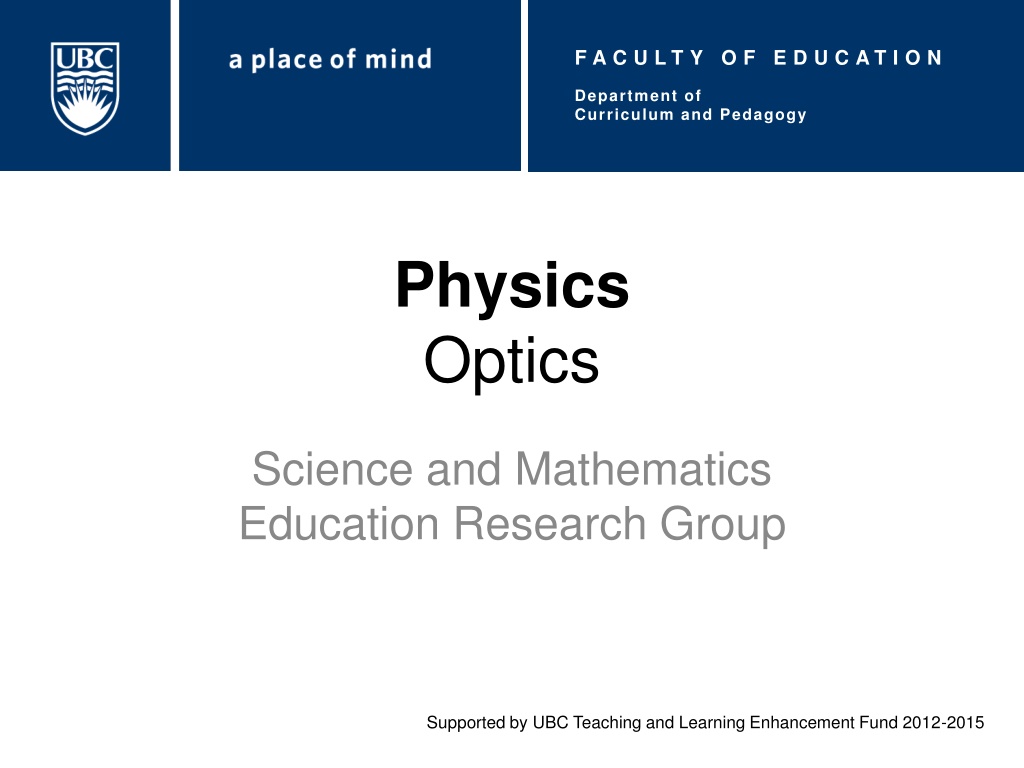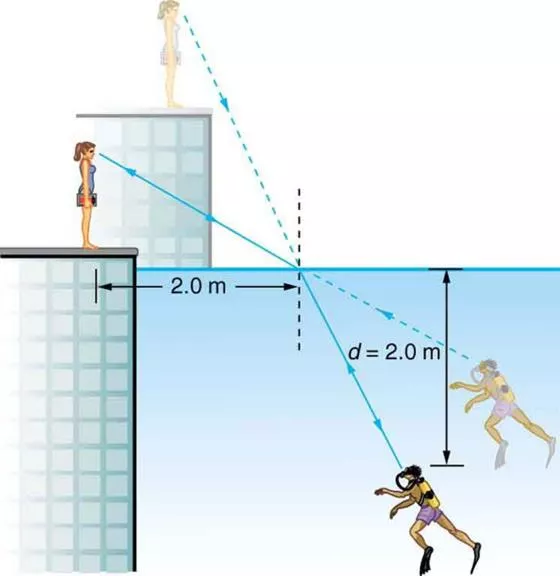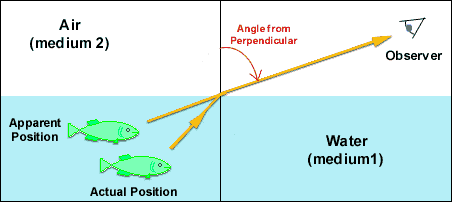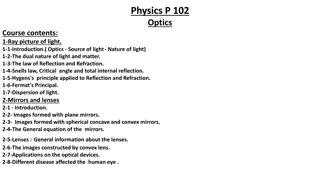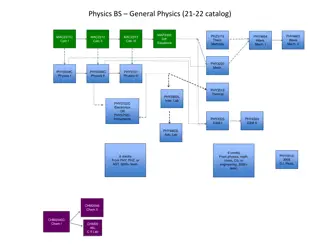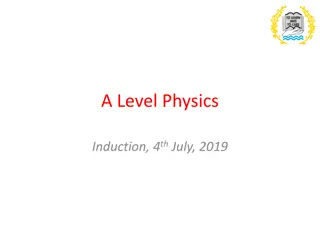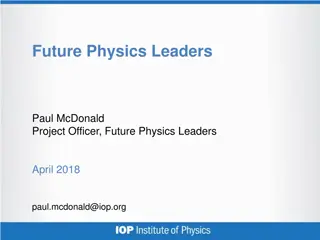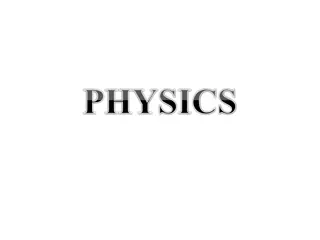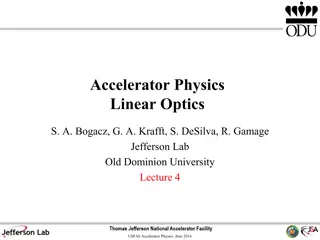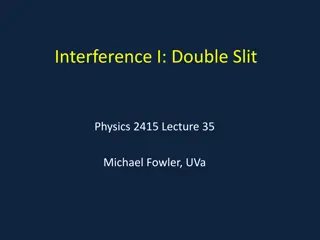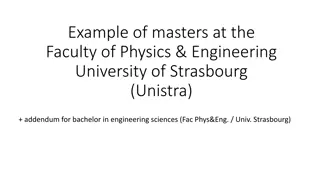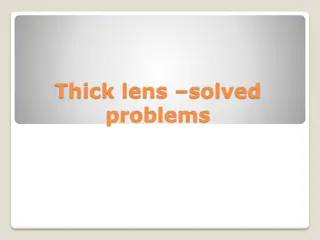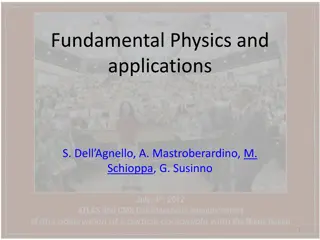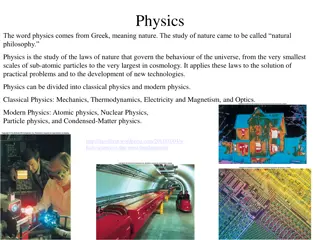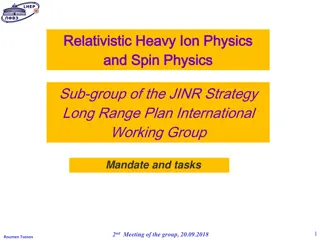Physics Optics and Learning Enhancement Fund
This content discusses optics problems and solutions in physics education at the Faculty of Education, supported by the UBC Teaching and Learning Enhancement Fund.
Download Presentation

Please find below an Image/Link to download the presentation.
The content on the website is provided AS IS for your information and personal use only. It may not be sold, licensed, or shared on other websites without obtaining consent from the author.If you encounter any issues during the download, it is possible that the publisher has removed the file from their server.
You are allowed to download the files provided on this website for personal or commercial use, subject to the condition that they are used lawfully. All files are the property of their respective owners.
The content on the website is provided AS IS for your information and personal use only. It may not be sold, licensed, or shared on other websites without obtaining consent from the author.
E N D
Presentation Transcript
FACULTY OF EDUCATION FACULTY OF EDUCATION F A C U L T Y O F E D U C A T I O N Department of Curriculum and Pedagogy Physics Optics Science and Mathematics Education Research Group Supported by UBC Teaching and Learning Enhancement Fund 2012-2015
Question Title Question Title Optics http://tfssmypscience.pbworks.com/w/page/53182871/Optics http://cnx.org/contents/18eef263-8513-4954-bcc8-07aa263f0a50@7/ The-Law-of-Refraction
Question Title Question Title Optics The following questions have been compiled from a collection of questions submitted on PeerWise (https://peerwise.cs.auckland.ac.nz/) by teacher candidates as part of the EDCP 357 physics methods courses at UBC.
Question Title Question Title Optics Problems I A light ray travels from a given medium into three different media: medium A, medium B, and medium C. Rank the media's indices of refraction from greatest to least. Note: The angle of incidence is the same in all three systems and the medium that the incident and reflected rays travel in is the same for all three systems. incident ray incident ray incident ray reflected ray reflected ray reflected ray refracted ray medium A medium B medium C refracted refracted ray ray A. ??> ??> ?? B. ??= ??= ?? C. ??> ??> ?? D. ??> ??> ?? E. ??> ??> ??
Question Title Question Title Solution Answer: A Justification: Note that the angle of incidence and the refractive index of the first medium are the same in the three systems. In order to determine the relative refractive indices of medium A, B, and C, we have to look at the angle of refraction in each system. Recall that the smaller the angle of refraction, the larger the medium's refractive index. Thus, A is the correct answer. More details on the next slide.
Question Title Question Title Solution continued Answer: A In other words, the more the refracted ray bends toward the normal line, the larger that medium's refractive index. Using Snell s Law of Refraction, ?1sin ?1 = ???????? = ?2 sin(?2), we can say that when ?2 increases, sin(?2) increases, which means that ?2 must decrease to remain constant. Thus, ?2,?< ?2,?< ?2,? ??> ??> ?? Therefore, A is the correct answer.
Question Title Question Title Optics Problems II A light ray travels through vacuum and into a second mystery medium. Which of the following diagrams could accurately represent this system? A. Medium A, B, and C. B. Medium A and B. C. Medium A and C. D. Medium A. E. None of the diagrams accurately represent the system.
Question Title Question Title Solution Answer: C Justification: Note that the refractive index of vacuum is 1 (minimum value). This means that the indices of refraction of other mediums are greater than 1. When a light ray travels from vacuum to a medium that has a larger index of refraction (optically dense), the light ray bends toward the normal line. In medium A, the light ray bends toward the normal. Medium A is optically denser than vacuum. This means that the light ray travels slower in medium A than in vacuum. In medium C, the light ray travels straight through. Medium C is identical to the vacuum. This means that the light ray travels at the same speed in medium C and the vacuum.
Question Title Question Title Solution continued Answer: C In medium B, the light ray bends away from the normal. Medium B is optically less denser than vacuum. This also means that the light ray travels faster than the speed of light in medium B, which is not possible. Therefore, C is the correct answer. For more information: http://hyperphysics.phy-astr.gsu.edu/hbase/geoopt/refr.html http://physics.stackexchange.com/questions/37731/refraction-reflection-and-what-is-total-reflection
Question Title Question Title Optics Problems III If a visible light source is travelling away from a stationary observer, the light will appear: A. To have a shorter wavelength, making it slightly bluer. B. The same as if the source was stationary. C. To have a longer wavelength, making it slightly redder.
Question Title Question Title Solution Answer: C Justification: All waves, for example light waves, water waves, sound waves, X-rays, and microwaves, share certain basic characteristics: amplitude, frequency, and wavelength. These waves also share a number of properties, including what is known as the Doppler Effect. The Doppler effect describes how the received frequency of a source (how it is perceived when it gets to its destination) differs from the sent frequency if there is motion that is increasing or decreasing the distance between the source and the receiver. Case 1: When the distance between the source and the receiver remains constant, the frequency of the received waves is the same in both places.
Question Title Question Title Solution continued Answer: C Case 2: When the distance between the source and the receiver is increasing, the frequency of the received waves is lower than the frequency of the source waves (redshift). Case 3: When the distance between the source and the receiver is decreasing, the frequency of the received waves is higher than the frequency of source waves (blueshift). Thus, C is the correct answer. For more information: https://www.youtube.com/watch?v=h4OnBYrbCjY https://en.wikipedia.org/wiki/Redshift
Question Title Question Title Solution continued Expanded explanation: When the source of the waves is moving toward the observer, each successive wave crest is emitted from a position closer to the observer than the previous wave. Therefore, each wave takes slightly less time to reach the observer than the previous wave. Hence, the time between the arrival of successive wave crests at the observer is reduced, causing an increase in the frequency. While they are travelling, the distance between successive wave fronts is reduced, so the waves "bunch together". Conversely, if the source of waves is moving away from the observer, each wave is emitted from a position farther from the observer than the previous wave, so the arrival time between successive waves is increased, reducing the frequency. The distance between successive wave fronts is then increased, so the waves "spread out". Source: https://en.wikipedia.org/wiki/Doppler_effect
